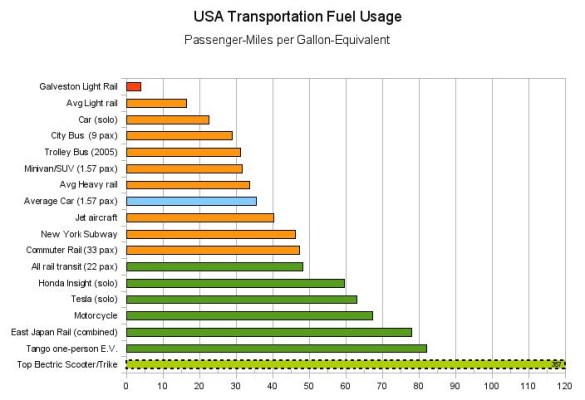ls99
Give me a museum and I'll fill it. (Picasso) Give me a forum ...
- Joined
- May 2, 2008
- Messages
- 6,513
The article, reader mail really, is about taxes, for funding Air traffic Control by taxing passengers.
There is a gem of information in it, an eye opener. If one disregards the MPG cost of getting to and from the airport, commercial flights give roughly 60 mpg fuel efficiency per passenger. At least according to the writer.
AVweb » The World's Premier Independent Aviation News Resource
The story is about 1 1/2 page down in the left column headed:Letter of the Week: The Case for Fuel Taxes.
Fifth paragraph:
"It turns out that, when measured by passenger-mile, most airplanes get about the same mileage, about 60 passenger-miles per gallon. Now, there is a range, but it's not six passenger-miles per gallon, and it's not six hundred passenger-miles per gallon, either — and it tracks reasonably close for a 737 or a Citation."
Few cars can boast that performance in MPG at aviation's or any ground speed.
I will not travel via commercial aircraft, the hassle factor is just not worth it for me. I would have never guessed the 60 passenger mile per gallon.
Can't say that I am for the proposed direct tax to passengers, but it is food for thought.
http://www.avweb.com/
There is a gem of information in it, an eye opener. If one disregards the MPG cost of getting to and from the airport, commercial flights give roughly 60 mpg fuel efficiency per passenger. At least according to the writer.
AVweb » The World's Premier Independent Aviation News Resource
The story is about 1 1/2 page down in the left column headed:Letter of the Week: The Case for Fuel Taxes.
Fifth paragraph:
"It turns out that, when measured by passenger-mile, most airplanes get about the same mileage, about 60 passenger-miles per gallon. Now, there is a range, but it's not six passenger-miles per gallon, and it's not six hundred passenger-miles per gallon, either — and it tracks reasonably close for a 737 or a Citation."
Few cars can boast that performance in MPG at aviation's or any ground speed.
I will not travel via commercial aircraft, the hassle factor is just not worth it for me. I would have never guessed the 60 passenger mile per gallon.
Can't say that I am for the proposed direct tax to passengers, but it is food for thought.
http://www.avweb.com/




